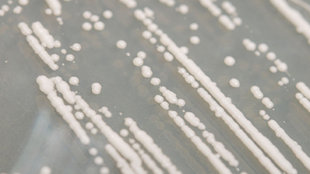Genetically engineered yeast produce the cannabinoids THC and CBD, researchers reported today (February 27) in Nature. Much like in their typical application of brewing beer, the microbes ferment sugar into the compounds.
The authors say the protocol offers a way to produce a desired cannabinoid without contamination from other plant products. For instance, CBD has been developed into therapeutic products that don’t cause the high of THC. “Being able to produce [CBD] in a way that’s uncontaminated with THC is a pretty valuable thing,” coauthor Jay Keasling of the University of California, Berkeley, tells Wired.
To engineer their yeast, Keasling and his colleagues introduced a number of genes for enzymes that convert the sugar galactose to a cannabinoid called CBGA. Then each strain of yeast used its particular suite of introduced genes to make inactivated forms of THC and CBD. Heating the microbes switched the cannabinoids into their active forms.
Yeast have been induced to take steps toward cannabinoid production previously, but Keasling’s work has “put it all together and shown that it actually works inside one cell, which is cool,” Kevin Chen, the chief executive of Hyasynth Bio in Montreal, Canada, which is working to produce cannabinoids in engineered yeast, bacteria, and algae, tells Nature.
One source tells Nature that the output of the engineered yeast would need to be boosted 100-fold for it to compete with the cost of plant-derived cannabinoid production.
See “Yeast-Based Opioid Production Completed”
The scientists also applied their technique to produce cannabinoids not found in nature. “This work lays the foundation for the large-scale fermentation of cannabinoids, independent of Cannabis cultivation, which will enable the pharmacological study of these highly promising compounds and could ultimately lead to new and better medicines,” they write in their paper.







